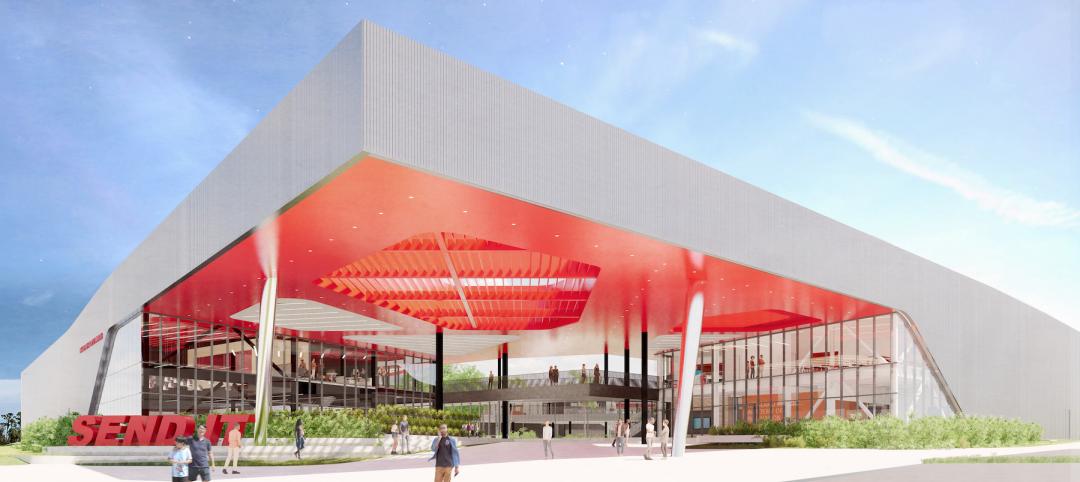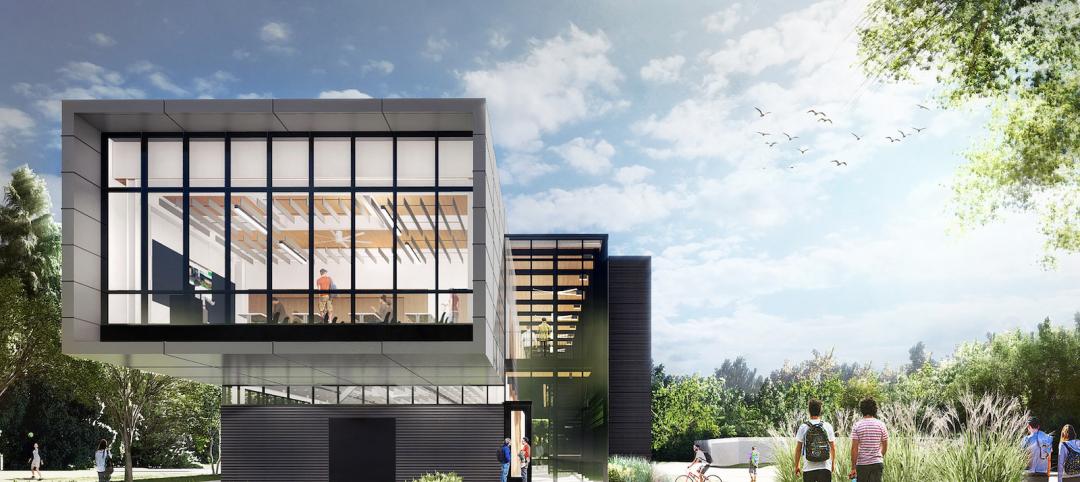In June 2020, Johns Hopkins University completed its $372.5 million acquisition of the Newseum in Washington, D.C., which had closed the year before. A $275 million renovation of that building resulted in the Johns Hopkins University Bloomberg Center, a higher education facility that brings together many of the university’s divisions within a building redesigned as a vertical campus for transparency and sustainability.
The 435,000-ft facility opened last August at 555 Pennsylvania Avenue at the heart of the nation’s capital. It is anchored by Johns Hopkins’ School of Advanced International Studies, its Carey Business School, its Krieger School of Arts and Sciences, the Peabody Institute, and the newly launched School of Government and Policy. The Center’s mission, stated Johns Hopkins, is to “connect the worlds of research and policy, educate future leaders and innovators, convene a range of viewpoints to foster discovery and dialogue, and bring a fresh infusion of artistic expression.”

More than 3,000 students, faculty, researchers, and staff come through this 10-story building daily. The Center allocates 300,000 sf of its interior space to learning, with 38 high-tech classrooms of varying capacities. On the east side of the building’s seven-story-tall interior atrium, a 20x27-ft “floating” glass classroom hangs from a pair of bridge girders. On the west side of the atrium rises a 70-ft treehouse-like stacked assemblage of classrooms and open lounges.
The atrium is anchored by a sloped seating area called The Beach, a nod to the grassy space at Johns Hopkins’ Homewood campus in Baltimore.
Ennead gets another shot at an old project
Inside the Center as well are the Irene and Richard Frary Library on its second floor, an event space called The Link on its fourth floor, a 3,350-sf multimedia suite, a fitness and wellness center, a lounge with 435 seats, and a 375-seat theater with a 640-sf stage and 7,000 sf of backstage support. Space has been earmarked for a future restaurant and café.

The building’s exterior is encased in an enlarged glass façade and a 50-ft curtainwall that faces Pennsylvania Avenue; pink marble cladding, and 16,888 sf of roof terraces. “As architects, it is a rare opportunity to revisit an earlier design and reimagine it for an entirely new purpose,” said Richard Olcott, FAIA FAAR, Design Partner at Ennead Architects, this Center’s exterior architect, and the original architect of the Newseum.
This project’s building team also included SmithGroup (AOR, lighting design, fire protection, life safety engineering), Rockwell Group (interior architect), Clark Construction (GC), Wiles Mensch (CE), LERA Consulting Structural Engineers (SE), WSP (MEP engineer, fire protection, life safety engineer), Oehme, van Sweden (landscape architect), Babich Acoustics (acoustics), and BrightTree Studios (A/V). MGAC provided project and cost management support.
A reduced carbon footprint

Concerning the atrium, Rockwell Group identifies two key insertions: the “Room Stair” that wraps around the building’s glass rooms and lounges; and the “Room Bridge” that houses classrooms and lounge spaces, and bridges both sides of the building.
The building team eliminated 77.8 tons of carbon dioxide from the construction process by using CarbonCure concrete. The team also recycled or diverted from landfills 96.6 percent of the project’s construction waste that, according to SmithGroup, included demolishing 50,000 sf of interior floorplates to make way for 90,000-sf floorplates, and removing the Newseum’s marble exterior panels.
Related Stories
University Buildings | Apr 18, 2022
SmithGroup to design new Univ. of Colorado Denver engineering, design, computing building
The University of Colorado Denver selected SmithGroup to design a new engineering, design, and computing building that will serve as anchor of new downtown innovation district.
Market Data | Apr 14, 2022
FMI 2022 construction spending forecast: 7% growth despite economic turmoil
Growth will be offset by inflation, supply chain snarls, a shortage of workers, project delays, and economic turmoil caused by international events such as the Russia-Ukraine war.
Projects | Apr 1, 2022
University complex encourages exchange between academics and residents
In the small Danish city of Horsens, C.F. Møller Architects has created a university complex that unites higher education with urban life—creating synergies among students, staff, businesses, and residents
Projects | Mar 31, 2022
Tech school designed to prepare students for high-wage, high-skill careers
In Wesley Chapel, Fla., a half-hour north of Tampa, Kirkland Ranch Academy of Innovation (KRAI) is “not going to look like anything you’ve ever seen before,” Kim Moore, assistant superintendent at Pasco County Schools, said in a statement.
Energy-Efficient Design | Mar 25, 2022
University of Pittsburgh Releases ‘Pitt Climate Action Plan’
The University of Pittsburgh has released the Pitt Climate Action Plan, detailing how the University will achieve its goal to go carbon neutral by 2037 through investments in clean energy, transportation, efficiency and other areas.
Higher Education | Mar 24, 2022
Higher education sector sees 19 percent reduction in facilities investments
Colleges and universities face a growing backlog of capital needs and funding shortfalls, according to Gordian’s 2022 State of Facilities in Higher Education report.
Projects | Mar 16, 2022
Tomorrow’s STEM leaders get a state-of-the-art research complex
In February, North Carolina Agriculture and Technical State University (NC A&T) opened its new Engineering Research & Innovation Complex (ERIC).
University Buildings | Mar 7, 2022
A new facility can offer thousands of equine therapy sessions a year
At its new Spur campus in Denver, Colorado State University (CSU) will bring its expertise to the public by offering free educational experiences to visitors of all ages. Spur’s three buildings—Hydro, Terra, and Vida—will focus, respectively, on water, earth, and life.
Higher Education | Mar 1, 2022
SRG Partnership designs a nautically inspired space for maritime science
A community college in Oregon has begun construction on a new building devoted to maritime science. With it, the school hopes to solidify its position as a major industrial and marine technology center in the Pacific Northwest.
University Buildings | Feb 18, 2022
On-campus performing arts centers and museums can be talent magnets for universities
Cultural facilities are changing the way prospective students and parents view higher education campuses.

















